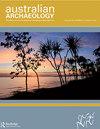Insights from a small sea cave: Reanalysis of the bone technology from Durras North, Yuin Country, Coastal New South Wales, Australia
IF 1.2
3区 历史学
Q2 ANTHROPOLOGY
引用次数: 0
Abstract
Abstract Almost 60 years ago, the small cave of Durras North was excavated to learn more about the Walbunga Yuin People who have lived along this part of the New South Wales coast for thousands of years. From a 2 m × 2 m pit, an extensive shell midden recording some 500 years of site use was uncovered. Amongst the many kilograms of marine shell were a small number of stone and shell artefacts and almost 500 tools made primarily on short-tailed shearwater bone. Such large collections of osseous technology are rare in the Australian archaeological record and consequently this assemblage provides a unique opportunity to better understand the use of bone on this continent. We revisited this remarkable bone tool assemblage and discovered that the fishing-spear tips indicate several distinctive approaches in their manufacture and style – including some ingeniously utilising the natural structure of the bird bone to create tangs. In addition, we also identified tools used in working organic fibres or leathers, as well as a rare interpersonal weapon. In total, the Durras North osseous assemblage not only provides unprecedented detail on the construction of the multipronged fishing spears which were so common a sight in southeast Australia on European arrival, but also insights into more ephemeral cultural manufacturing and use practices.来自一个小海洞的洞察:对来自澳大利亚新南威尔士州沿海地区的Durras North, Yuin Country的骨骼技术的再分析
大约60年前,人们挖掘了Durras North的小洞穴,以了解更多关于Walbunga Yuin人的信息,Walbunga Yuin人在新南威尔士州海岸的这一地区生活了数千年。从一个2米× 2米的坑中,发现了一个巨大的贝壳堆,记录了大约500年的现场使用情况。在许多公斤的海洋贝壳中,有少量的石头和贝壳制品,以及近500件主要用短尾鹱骨制成的工具。在澳大利亚的考古记录中,如此大规模的骨骼技术收藏是罕见的,因此,这一组合为更好地了解这块大陆上骨骼的使用提供了一个独特的机会。我们重新审视了这个非凡的骨头工具组合,发现这些鱼叉尖在制作和风格上有几种独特的方法,包括一些巧妙地利用鸟骨头的自然结构来制作刺。此外,我们还发现了用于加工有机纤维或皮革的工具,以及一种罕见的人际武器。总的来说,Durras North的骨骼组合不仅提供了有关欧洲人到达澳大利亚东南部时常见的多刺鱼矛构造的前所未有的细节,而且还提供了对更短暂的文化制造和使用实践的见解。
本文章由计算机程序翻译,如有差异,请以英文原文为准。
求助全文
约1分钟内获得全文
求助全文

 求助内容:
求助内容: 应助结果提醒方式:
应助结果提醒方式:


